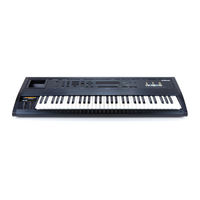
ENSONIQ ASR-10 Manuals
Manuals and User Guides for ENSONIQ ASR-10. We have 3 ENSONIQ ASR-10 manuals available for free PDF download: Musician's Manual, Service Manual
ENSONIQ ASR-10 Musician's Manual (391 pages)
Brand: ENSONIQ
|
Category: Synthesizer
|
Size: 1.09 MB
Table of Contents
Advertisement
ENSONIQ ASR-10 Musician's Manual (154 pages)
Brand: ENSONIQ
|
Category: Recording Equipment
|
Size: 2.55 MB
Table of Contents
ENSONIQ ASR-10 Service Manual (84 pages)
Ensoniq ASR Electronic Keyboard Service Manual
Brand: ENSONIQ
|
Category: Electronic Keyboard
|
Size: 1.55 MB
Table of Contents
Advertisement


